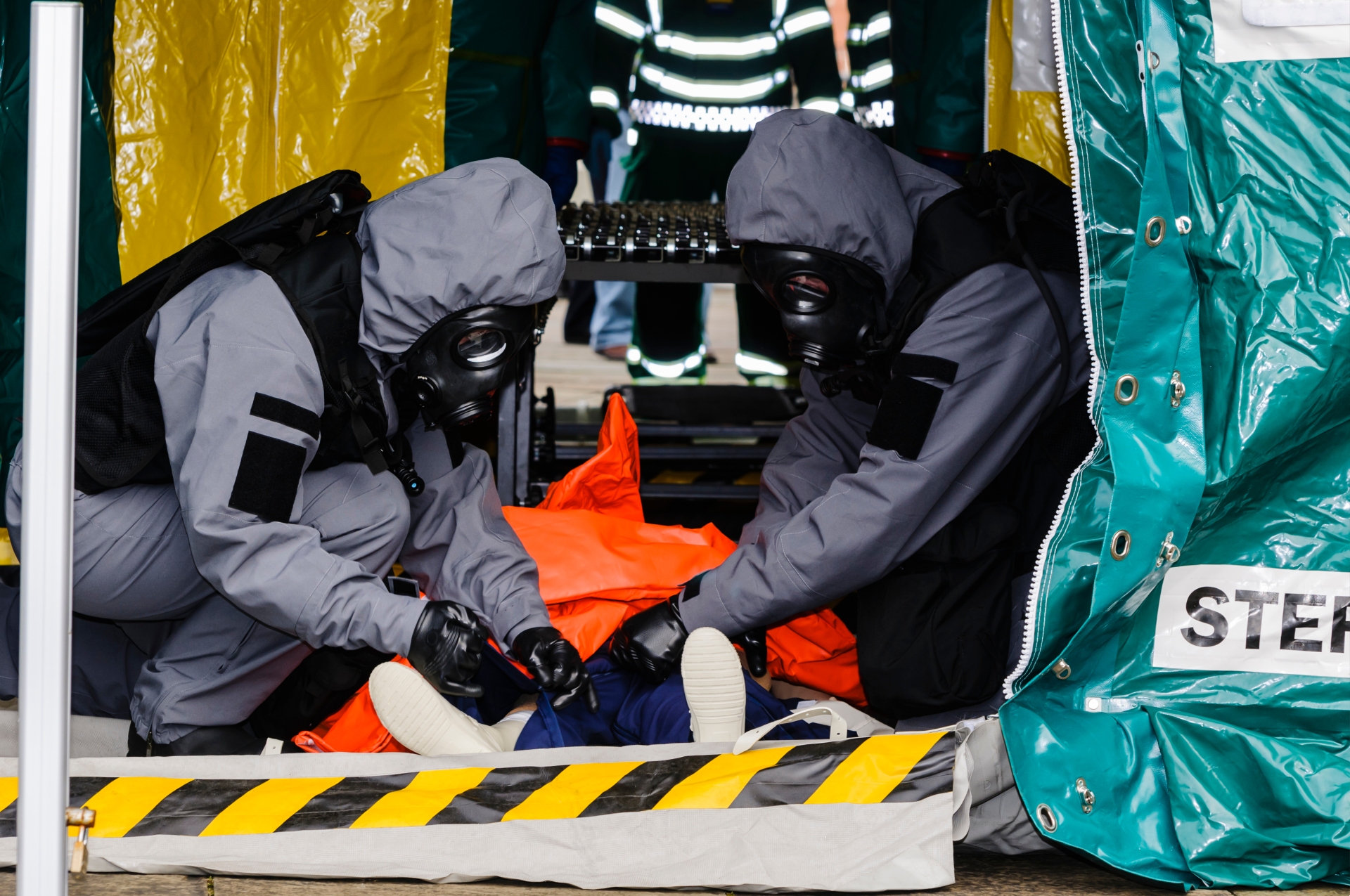Radiological Agents part 3
 Radiation sickness and treatment:
Radiation sickness and treatment:
In small doses of radiation, a person may not have any obvious signs, symptoms, or effects. Acute radiation syndrome (ARS) in patients is more likely if:
- The radiation dose was high
- The radiation was able to reach internal organs
- The person’s entire body, or most of it, received the dose
- The total radiation dose was received in a short time, usually within minutes
Initial symptoms of ARS may include nausea, vomiting, headache, and diarrhoea:
- These symptoms start within minutes to days after the exposure, can last for minutes up to several days, and may come and go
- After the initial symptoms, a person usually looks and feels healthy for a period of time, after which they will become sick again with variable symptoms and severity that vary depending on the radiation dose received
- These symptoms include loss of appetite, fatigue, fever, nausea, vomiting, diarrhoea, and possibly even seizures and coma
- This seriously ill stage may last from a few hours up to several months
- People who receive a high radiation dose also can have skin damage. This damage can start to show within a few hours after exposure or it may be delayed for several days. It can include swelling, itching, and redness of the skin, or may be more severe and include blisters or ulcers
- The skin may heal for a short time, followed by the return of swelling, itching, and redness days or weeks later
The likelihood of survival and severity of symptoms depends on the dose of radiation received. Within the pre-hospital and hospital setting:
- Treatment of ARS focuses on reducing and treating infections, maintaining hydration, and treating injuries and burns
- The lower the radiation dose, the more likely it is that the person will recover from ARS
- The cause of death in most cases is the destruction of the person’s bone marrow, which results in infections and internal bleeding
- For survivors of ARS, the recovery process may last from several weeks up to 2 years
Dealing with radiation:
It is unlikely that you would attend a radiological terrorism attack due to safety being difficult to maintain and the requirement for specialist equipment and personnel. HART have radiological PPE equipment as well as monitors for radiation levels.
When dealing with radiation, the aim is to have no exposure, or keep it as low as reasonably practicable. When dealing with a source which is giving off radioactive decay within an area, you need to consider 3 things when looking to protect yourself:
Time – The amount of time you are exposed to radiation will increase the amount of radiation you receive. By limiting your time in the exposed area, you are limiting the dose you receive.
Distance – Within radiation, exposure can be affected by your distance from the source. The inverse square law comes into play here. This put simply, if you double the distance from the source, you quarter the dose you receive. Remember this also works the other way, if you half your distance from the source, then you increase the dose you receive by 4 times.
Shielding – If you are able to take cover behind an object which offers protection against the emitted radiation, then you can block yourself from receiving the radiation.
In a dirty bomb scenario, again it would be unlikely that you would respond as you would require specialist PPE to provide any significant protection. If somehow you were exposed to radioactive dust, then the Remove, Remove, Remove actions and principles as detailed previously in this course would help limit your, and any casualties, exposure. Remove yourself from the affected area. Remove any contaminated clothing. Remove any contamination on yourself.